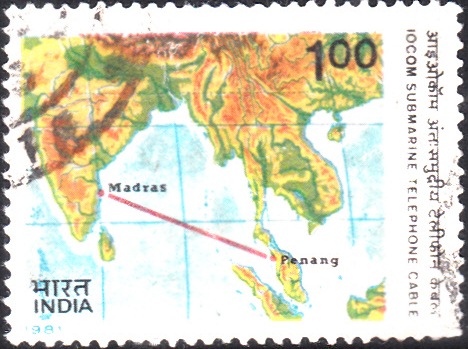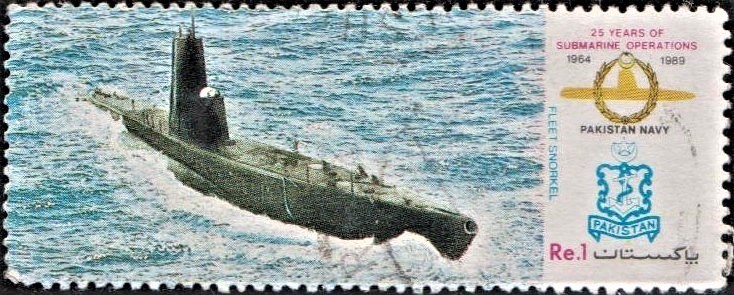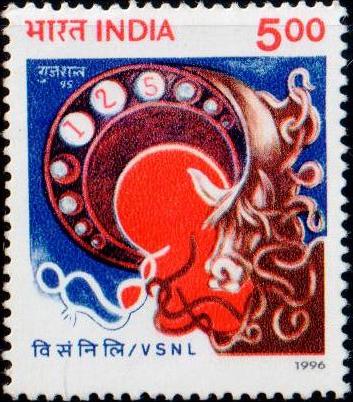
India on IOCOM Submarine Telephone Cable
A commemorative postage stamp on the Inauguration of the Indian Ocean Commonwealth Cable (IOCOM) Submarine Telephone Cable :
 Issued by India
Issued by India
Issued on Dec 24, 1981
Issued for : Indian Posts & Telegraphs Department is happy to commemorate the inauguration of the cable with a special stamp.
Description of Designs : The stamp shows a map with Madras and Penang linked by IOCOM Cable. The first day cover illustration shows a special cable-laying ship. Cancellation was designed by Charanjit Lal.
Type : Stamp, Postal Used
Colour : Multicolour
Denomination : 100 Paise
Overall size : 3.91 x 2.90 cms.
Printing size : 3.55 x 2.54 cms.
Perforation : 13 x 13
Paper : Unwatermarked adhesive stamp paper
Number Printed : 20,00,000
Number per issue sheet : 35
Printing Process : Photogravure
Printed at : India Security Press
About :
- From time immemorial men have sailed the lonely seas. As new lands were discovered and colonised, the frontiers of commerce expanded. But the sea proved an effective barrier to transmission of messages with expedition till telegraph was invented in 1837. With innovations in telecommunications technology, the first submarine telegraph cable (with only one circuit) was laid across the English Channel between England and France in 1850. The first submarine telephone cable was also laid between England and France in 1891. The first submarine cable with more than one circuit was laid between the Netherlands and Denmark in 1950. Its circuit capacity was 36. The longest submarine cable link is between Europe and the United States spanning the Atlantic Ocean. It is 3400 nautical miles long and has the highest number of circuits, viz. 4000 voice-grade telephone circuits. At present, there are about 195 submarine cable links in the world stretching across 142 thousand nautical miles with a total of about 136400 circuits.
- As a result of advances in submarine cable technology, there has been an upsurge in such cable systems all over the world. The modern wide-band submarine cable system provides a desirable complimentary medium to other communication systems involving wireless and satellite. The global wide-band, high-capacity submarine telephone cable network terminated at Singapore in the East and did not extend in to the Indian Ocean Region. There were, however, slow speed telegraph cables in the region which had become obsolete and were abandoned.
- The seven Commonwealth Countries of India, Sri Lanka, Malaysia, Singapore, Hong Kong, Australia and Canada joined hands to lay the cable system across the Indian Ocean between Madras and Penang (Malaysia). The 1350 nautical mile long, Indian Ocean Commonwealth Cable (IOCOM) has a capacity of 480 high grade telephone circuits with provisions for further expansion. IOCOM links India, for the first time, with the international submarine telephone cable network.
- The cable was laid by a special cable-laying ship from Marina Beach at Madras to Kuala Muda near Penang in Malaysia. A gateway complex at Madras housed the cable terminal equipments, telephone and telex gateway exchanges and other international telecommunication facilities. The total capital cost of the submerged cable system and terminal gateway complex was about Rs. 30 crores.
- (Text by courtesy of Oversea Communications Service).







